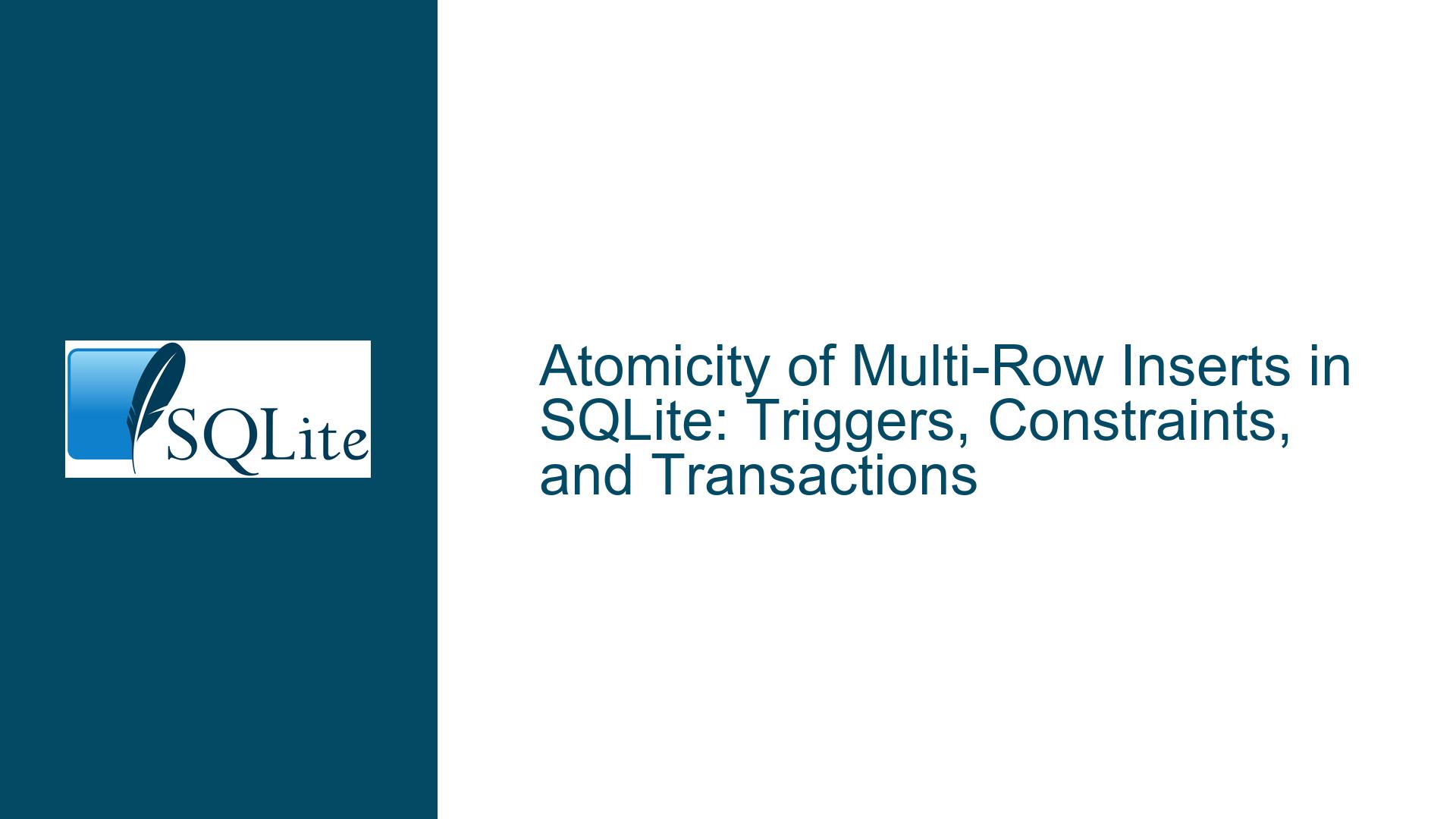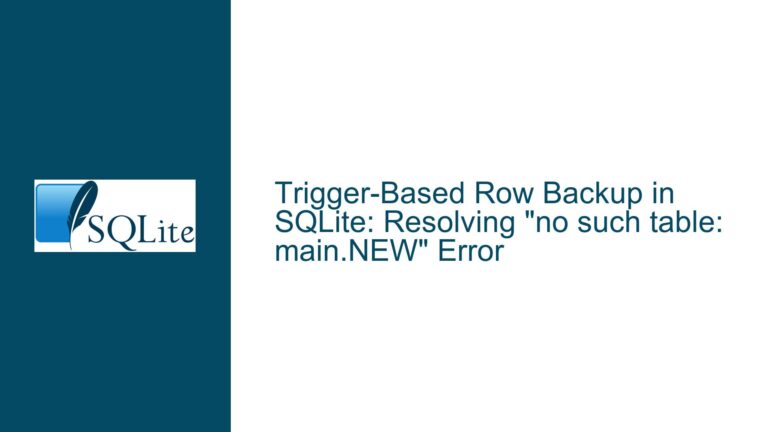Atomicity of Multi-Row Inserts in SQLite: Triggers, Constraints, and Transactions
Understanding Atomicity in Multi-Row Insert Operations
Atomicity is a fundamental concept in database operations, ensuring that a series of actions are treated as a single unit. Either all actions are completed successfully, or none are, maintaining database integrity. In SQLite, the atomicity of multi-row insert operations depends on several factors, including the use of explicit transactions, triggers, and constraints. This post delves into the nuances of atomicity in SQLite, particularly focusing on multi-row insert operations, and provides a comprehensive guide to understanding and troubleshooting issues related to it.
The Role of Triggers and Constraints in Insert Operations
When inserting multiple rows into a SQLite table, the presence of triggers and constraints can significantly impact the atomicity of the operation. Triggers are database callbacks that automatically execute in response to specific events, such as inserts, updates, or deletes. Constraints, on the other hand, enforce rules on the data being inserted, ensuring that only valid data is stored in the database.
Consider a scenario where a table has a trigger that raises an IGNORE exception for certain rows. If a multi-row insert operation includes rows that trigger this exception, the behavior of the insert operation can vary. For instance, if the trigger is designed to ignore rows that do not meet specific criteria, only the rows that meet the criteria will be inserted, while the rest will be ignored. This behavior can lead to partial inserts, where some rows are successfully inserted, and others are not, breaking the atomicity of the operation.
Similarly, constraints such as CHECK constraints can also affect the atomicity of multi-row inserts. If a CHECK constraint is violated by any row in the insert operation, the entire operation will fail, and no rows will be inserted. This behavior ensures that the database remains in a consistent state, but it also means that the atomicity of the operation is maintained at the cost of rejecting the entire insert if any row violates the constraint.
Troubleshooting Partial Inserts and Ensuring Atomicity
To troubleshoot issues related to partial inserts and ensure atomicity in multi-row insert operations, it is essential to understand the interaction between triggers, constraints, and transactions. Here are some steps to diagnose and resolve these issues:
Identify Triggers and Constraints: Begin by examining the table schema to identify any triggers or constraints that may affect the insert operation. Use the
.schemacommand in the SQLite shell to view the table definition and associated triggers.Test Insert Operations: Perform test insert operations with different sets of data to observe the behavior of the triggers and constraints. For example, insert rows that are expected to trigger the
IGNOREexception and rows that are not. This will help you understand how the triggers and constraints interact with the insert operation.Use Explicit Transactions: To ensure atomicity, wrap the multi-row insert operation in an explicit transaction using
BEGINandCOMMIT. This ensures that either all rows are inserted successfully, or none are, maintaining the atomicity of the operation. If any row fails to insert due to a trigger or constraint, the entire transaction will be rolled back.Handle Exceptions: If you encounter partial inserts due to triggers or constraints, consider handling exceptions in your application code. For example, you can catch exceptions raised by triggers or constraints and take appropriate action, such as logging the error or retrying the insert operation with modified data.
Review Trigger Logic: If the trigger logic is causing partial inserts, review and modify the trigger to ensure that it behaves as expected. For example, you may want to modify the trigger to raise an
ABORTexception instead ofIGNOREif you want the entire insert operation to fail when a specific condition is met.Optimize Constraints: Ensure that constraints are optimized to enforce data integrity without unnecessarily rejecting valid rows. For example, if a
CHECKconstraint is too restrictive, consider modifying it to allow a broader range of valid data.
By following these steps, you can troubleshoot issues related to partial inserts and ensure that multi-row insert operations in SQLite are atomic and maintain database integrity. Understanding the interaction between triggers, constraints, and transactions is key to achieving this goal.
Conclusion
Atomicity in multi-row insert operations is crucial for maintaining database integrity, and SQLite provides several mechanisms to achieve this. By understanding the role of triggers, constraints, and transactions, you can ensure that your insert operations are atomic and that your database remains in a consistent state. Whether you are dealing with partial inserts or ensuring that all rows are inserted successfully, the steps outlined in this post will help you troubleshoot and resolve issues related to atomicity in SQLite.






